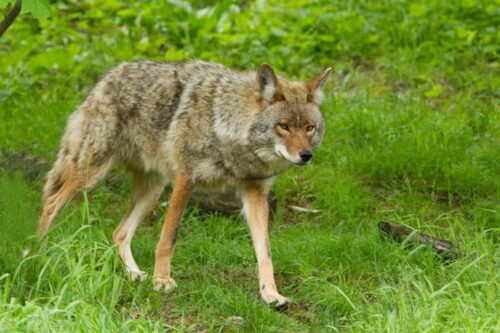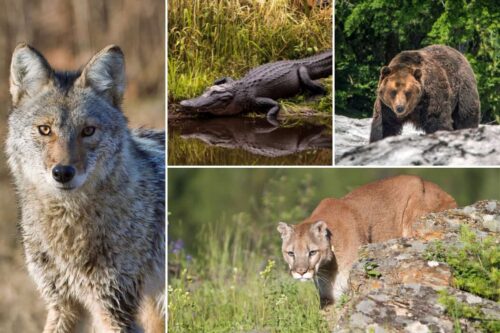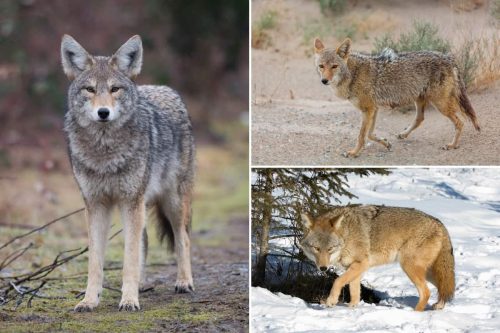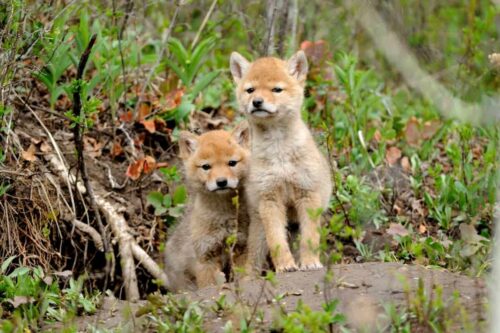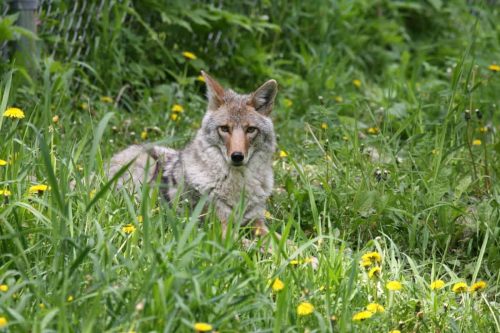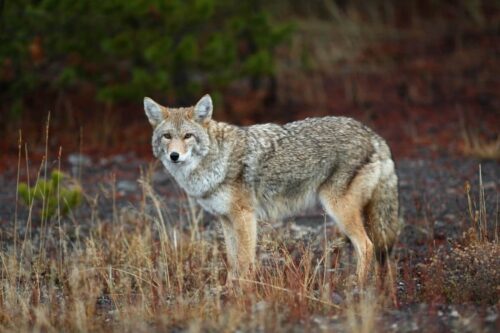Gray Fox vs Coyote: Understanding the Key Differences
Gray foxes and coyotes are the main wild animals of the North American region. Both of them belong to the same canid family but they rarely coexist with each other. In some areas, coyotes are the main reason for the decline in the population of foxes as foxes are the part of coyote diet. Red foxes are the main target of the coyote as they could not run very fast and are also unable to climb trees in case of emergency.
Gray foxes can keep themselves safe by climbing trees if they see any coyote coming towards them. In this article, we are going to make a very deep comparison between gray fox vs coyote on the basis of their diet, habitat, geographical region, size, etc. We will try our best that we don’t miss anything important about these animals. Stay tuned to have a complete overview of these animals.
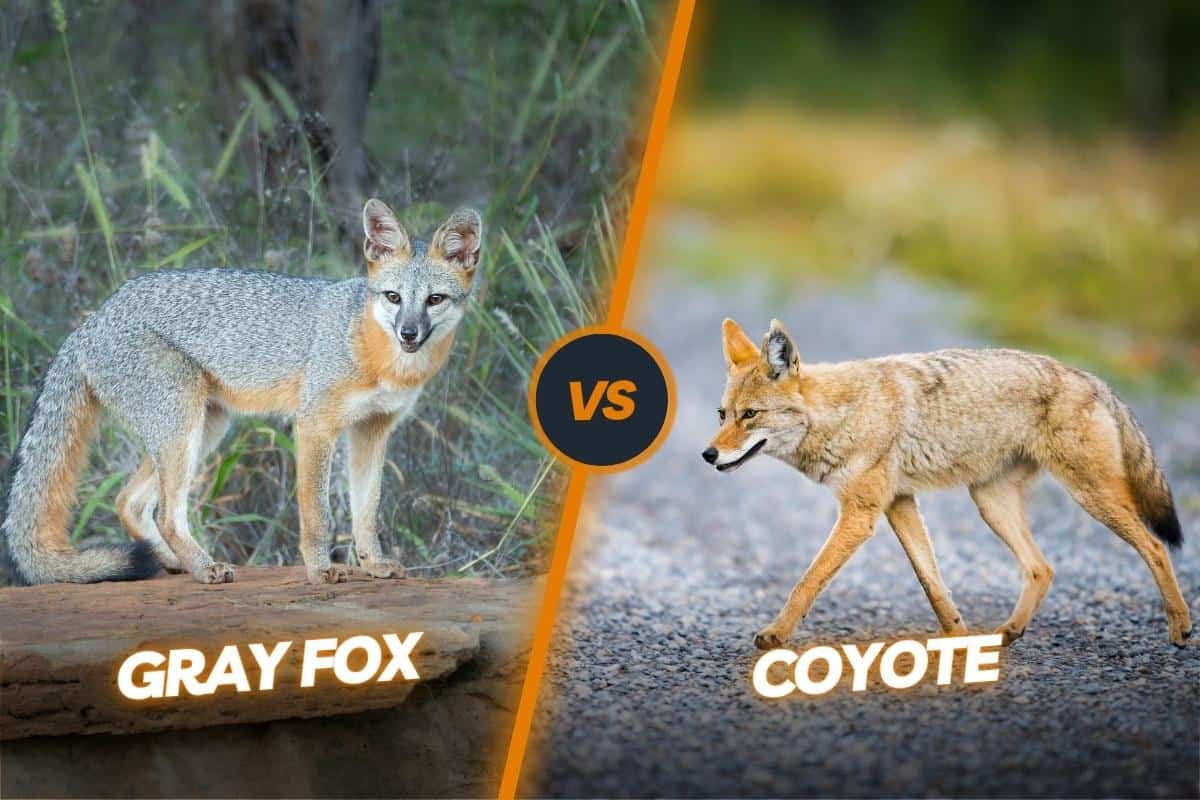
Contents
Comparing gray fox vs coyote
Have a look at the brief comparison between the coyote and gray fox in the form of a table.
| Features | Gray fox | Coyote |
|---|---|---|
| Scientific name | Urocyon cinereoargenteus | Canis latrans |
| Length | 34 inches | 37 inches |
| Weight | 15.5 pounds | 45 pounds |
| Height | 16 inches | 24 inches |
| Diet | Omnivore | Carnivore |
| Habitat | Rocky and wooded areas. | Mountainous areas, woody areas, caves. |
| Geographical range | Southern Canada to the northern side of South America. | Throughout the North American continent. |
| Color | Brown, tan, gray, and black | Gray, orange, and black |
| Conservation status | Least concern | Least concern |
| Behavior | Solitary animals, nocturnal | Pack animal |
Size: coyote vs gray fox
When it comes to size, there is not much difference in terms of the length of these animals. They are almost the same. But the coyote is much heavy as compared to the gray fox. The same is the case with the height of these animals. the weight of the gray fox is just 15 pounds as compared to the coyote’s weight of 45 pounds. Female gray foxes are bigger in size as compared to male gray foxes. Both of these animals come with bushy tails. Female coyotes are also smaller in size as compared to their male counterparts.
Also, read our comparison of Red fox or fox vs coyote.
Appearance: Gray fox vs coyote
When it comes to appearance, it is quite easy to distinguish gray foxes from other canid members. The body color of the gray fox is silver and they have very vivid black stripes from the upper body to the center of their back and also go to their tail. They have u-shaped heads along with temporal ridges. The ears are pointed at some angle and these ears are also angular.
If you look at the paws of the gray fox, these are oval-shaped having four triangular-shaped toes on the paws. They have very long and curved nails which let them easily climb up the trees. Coyote paws don’t have this much longer and sharp nails. Coyotes are actually thin-shaped animals having long muzzles, legs, and overall faces. The ears of the coyote are also longer than the ears of the gray foxes. Coyotes also have quite bigger heads on their body. When it comes to feet, coyote comes with less rounded but elongated feet than those of the gray fox.
Color: gray fox vs coyote
The color of the coyote mainly depends upon its location or habitat. If they are living in the desert, then they will be grayish-white in color. Coyotes living in mountainous areas will be mostly blackish or grayish in color. In other regions, you can mainly find red and light gray color coyotes having black and brown spots. Gray foxes will also be found in almost the same colors as these except for some elements of the orange color in their coat.
Habitat: gray fox vs coyote
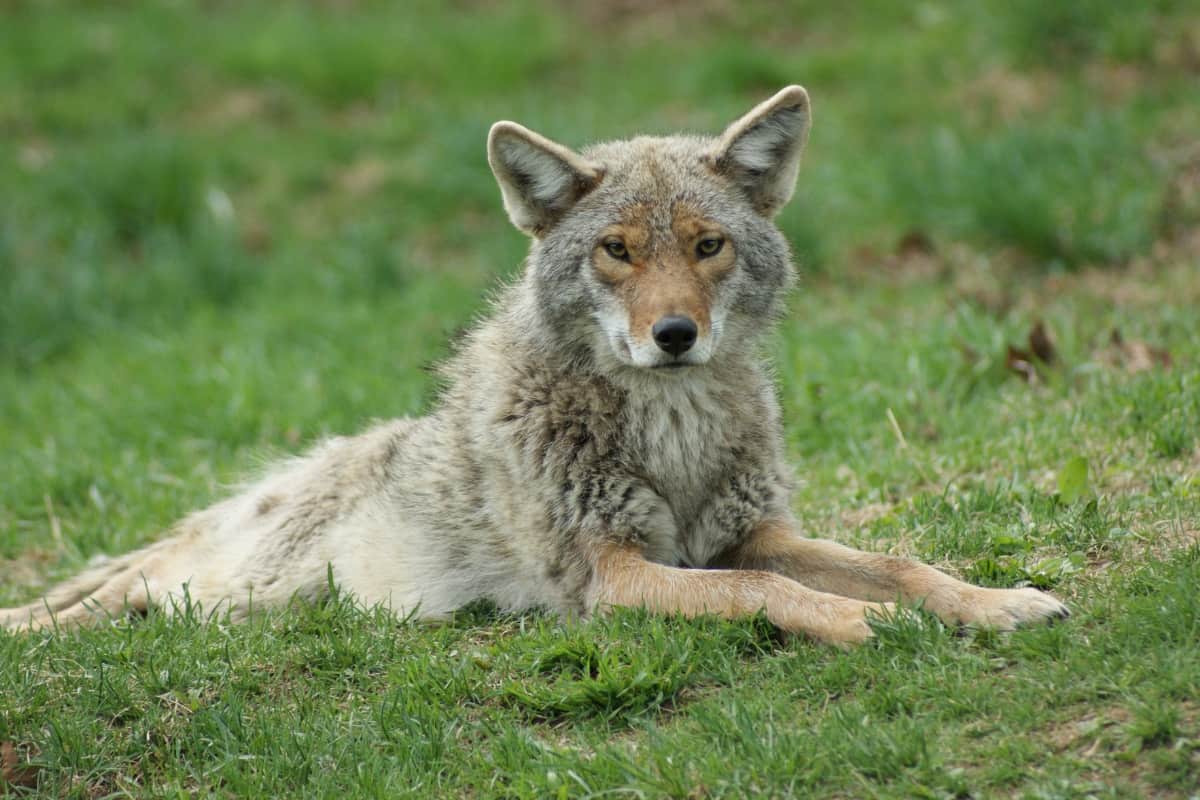
Gray foxes could be found throughout the Northern and Central American regions. They are also very actively present in the eastern side of the USA. They like to live in the woody, but deforestation and human settlement at such a huge scale have completely devastated their habitat and a decline in their population numbers was observed. They are also very adaptable animals and have been able to set their residents near fully urban and semi-urban areas.
In this regard, the region of southern Florida is very much known. You could also find them in abundance in areas like the Pacific states and Great lakes type regions. On the other hand, coyotes have a very active population throughout the North American continent. They like to live in mountainous and desert-type areas. They are also highly adaptable and that’s why you can easily find them in fully urban and semi-urban areas.
Diet: coyote vs gray fox
The gray fox is omnivore by nature and also known as the solitary as well as opportunistic hunter. In the eastern USA, they like to hunt small animals like voles, rabbits, birds, mice, etc. In the western USA, small mammals are not available in very huge quantities and that’s why in these regions gray foxes like to eat insects, herbs, fruits, vegetables, etc. In California, they mainly consume rabbits and rodents due to their huge abundance over there. They are also considered very important animals for the regulation of the gray fox population in different regions of the world.
Gray foxes are also capable of climbing trees and targeting birds in the nests. In this way, they can also have very easy access to the nuts, fruits, and seeds. It means that there will be an effect on their diet as the season changes. On the other hand, coyotes like to hunt in packs. They are carnivorous animals and only prefer to eat mammals. They are voracious hunters but like to hunt small animals.
The prey of the coyote could be small mammals like mice, squirrels, and rodents to large animals like deer, and other farm animals. They hunt large animals only if they are in groups as there are fewer chances of injury or killing in this way. Sometimes they also make pair with other animals like badgers for hunting purposes. Being opportunistic hunters, they could also rely on scrape food and human trash in case of emergency.
General behavior
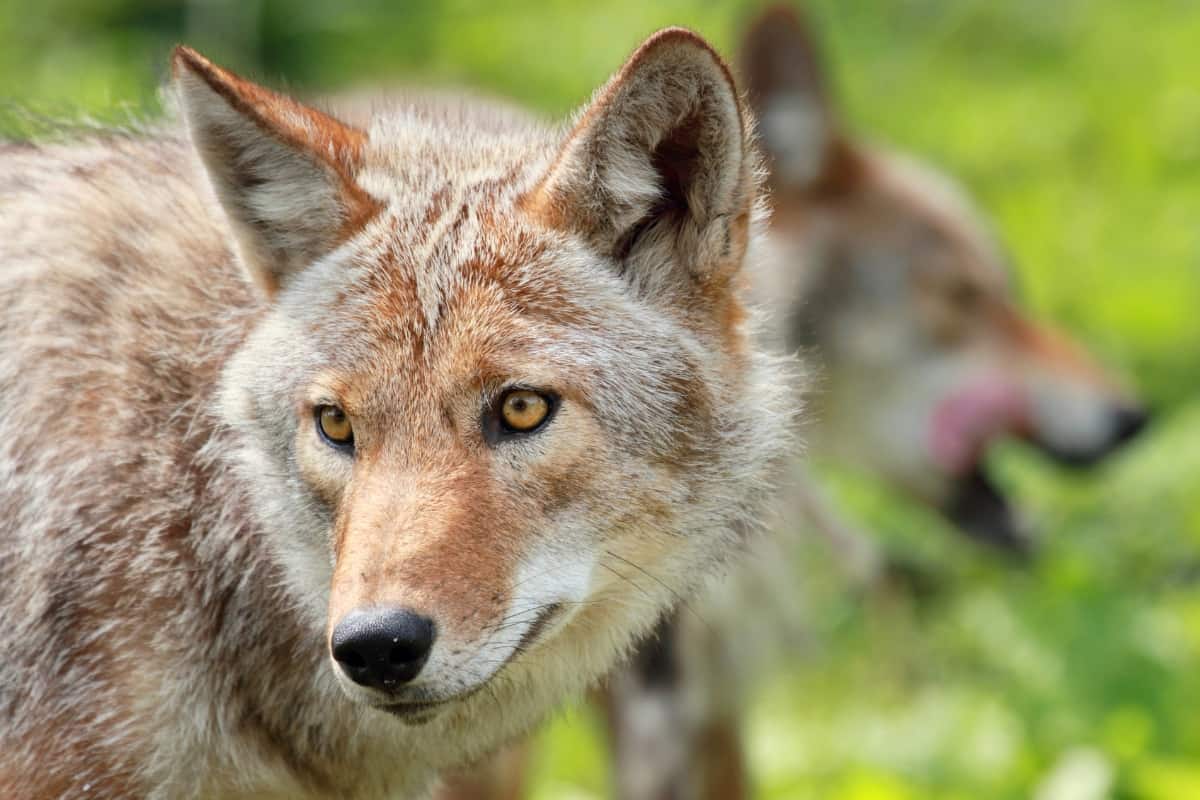
Coyotes like to occupy very large territorial ranges but they don’t defend always and only defend their dens or territory when the mating season comes. There is also no specific place for making dens as they could make their dens anywhere they think it is suitable or they can fulfill their dietary needs. The best place for making dens is grasslands and they could go as long as three to ten miles away from their main home territory in search of food.
On the other hand, the gray fox is considered a very solitary animal by nature and likes to make dens in hollow trees or stumps. Being nocturnal animals, they also sleep only in the morning. The main predators of the gray fox are coyotes and bobcats. They also like to live in urban and semi-urban areas as their territories have been occupied by human settlements and destroyed due to deforestation. Gray foxes can also climb trees to keep themselves safe from their predators.
Reproduction
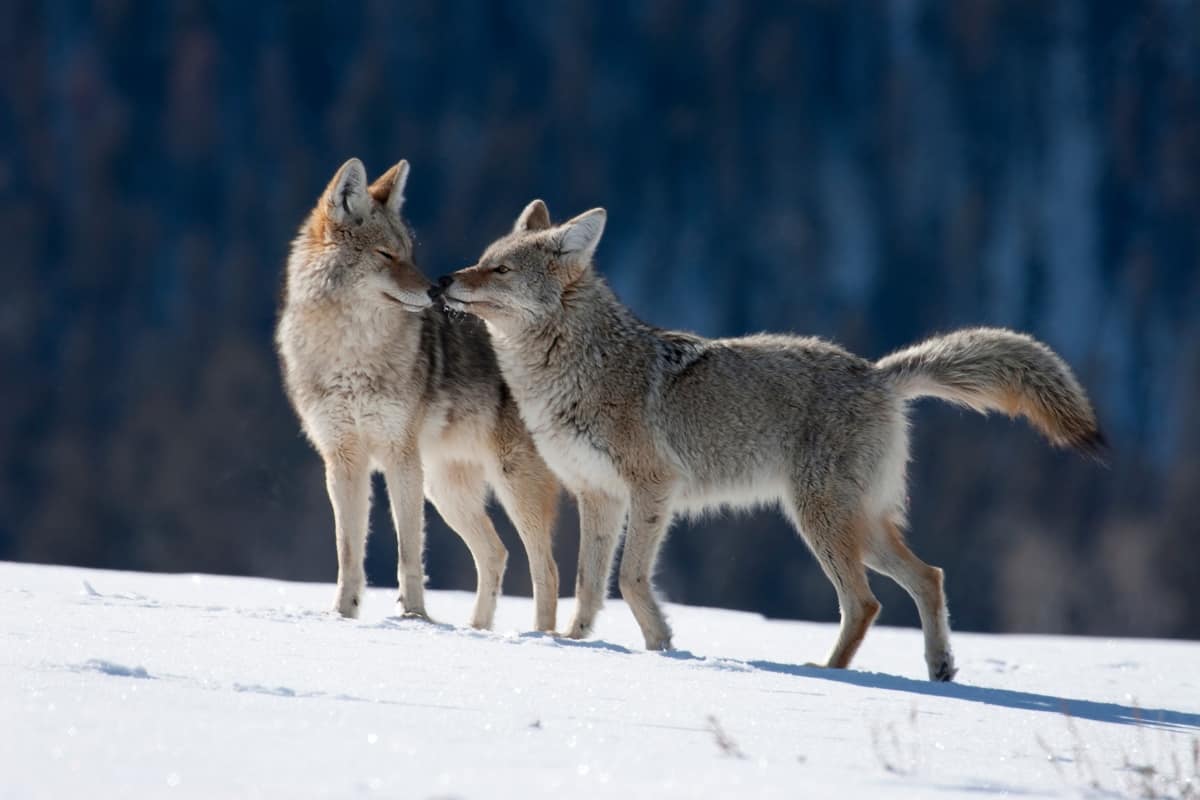
The mating season of the gray foxes lies between February to March. The maturity age of the female gray fox is around 10 months while the maturity age of the male gray fox is around 8 months. Females could give the maximum birth of 7 pups but the average figure is four. At the early age of the pups, the parents teach their children how to hunt and take care of their food needs. They do this till they become 3 months old. Both parents take part in the training of their pups. Source.
On the other hand, coyotes live in the form of packs. Female coyotes form long-term pair bonds with a single mate in the family. Female coyotes could give production of 6 pups at a time. Male coyotes play a very vital role in the collection of food for their family especially when the female coyote is pregnant.
Both male and female coyotes take part in making their dens. In the early days of coyote pups, they completely rely on their parents for food and many other things. They gradually take training from their parents to live on their own. They are born deaf as well as blind. Baby coyote only starts eating food when they become at least 15 days old. After at least four months of training, they become fully trained and fully weaned for hunting on their own.
Lifespan
The lifespan of these animals varies in both the wild and captivity. In the wilderness, the gray fox can live up to 6 years easily. In captivity, they can survive longer and can easily live up to 15 years.
On the other hand, coyotes live longer than gray foxes both in the wild and in captivity. In the wilderness, they can live up to a maximum of 14 years while in captivity they can easily live up to 20 years.
Conclusion
Both gray foxes and coyotes are very important wild animals of the North American continent. They might have shown some similarities in terms of their appearance but there are a lot of differences in terms of their habitat, geographical range, lifespan, diet, etc. In this article, we have covered everything on the basis of which you can easily differentiate between gray fox vs coyote.

Izzy is an experienced ranch worker who has a passion for exploring nature and getting up close to wildlife. With her connections to various animal organizations, Izzy is well-versed in animal care and rehabilitation.



